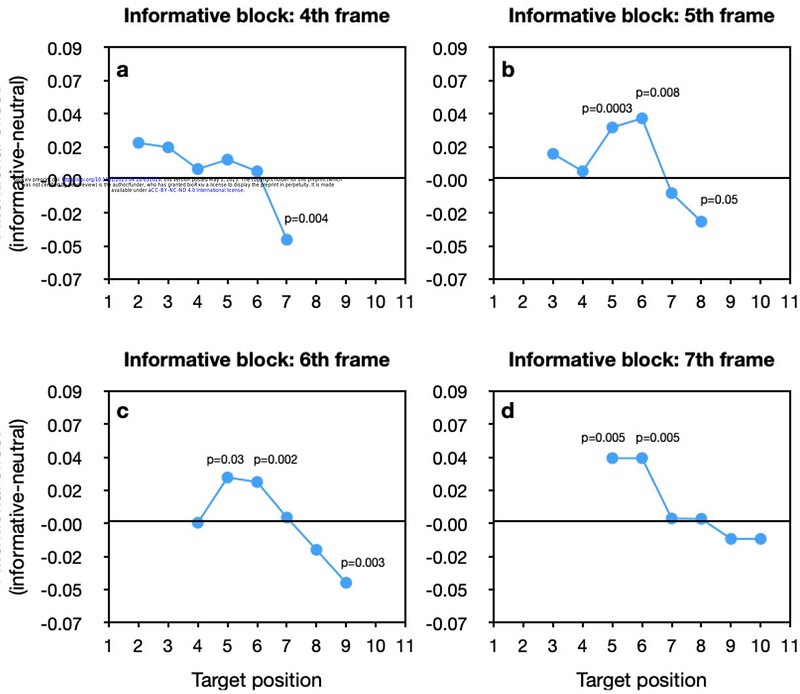Attention to a point in time causes a suppressive wake for subsequent time points

Attention to a point in time causes a suppressive wake for subsequent time points
Tkacz-Domb, S.; Yeshurun, Y.; Lindeberg, T.; Tsotsos, J. K.
AbstractThe Selective Tuning model proposed that attention to a visual stimulus suppresses interfering portions of the processing hierarchy. This has been shown in spatial and featural domains and the proposal extends to the temporal dimension. We investigated whether attending to a point in time leads to processing suppression of nearby time points. We presented a sequence of letters with an embedded target, and observers indicated the target\'s orientation. In the neutral condition, the target appeared randomly in one of the frames. In the informative condition, the target appeared in the same frame on most of the trials (\'expected\' trials), and the expected frame varied between blocks (Experiments 1-3) or groups (Experiment 4). On the remaining trials, it appeared before or after the most-probable frame (\'unexpected\' trials). Four different experiments were conducted to adjust the method and in the final one we found higher accuracy in expected trials than in neutral trials, indicating the allocation of temporal attention to the expected frame. When the target appeared after the expected frame, accuracy was lower than in the same neutral condition frame, suggesting an attentional suppressive wake in time (because the effect of attention cannot be observed until after stimulus onset).